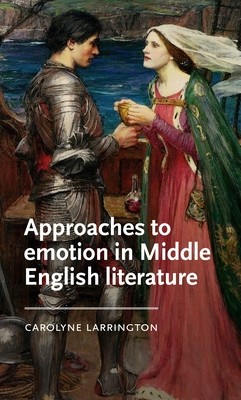
- We will send in 10–14 business days.
- Author: Carolyne Larrington
- Publisher: Manchester University Press
- ISBN-10: 1526176130
- ISBN-13: 9781526176134
- Format: 14 x 21.6 x 1.9 cm, kieti viršeliai
- Language: English
- SAVE -10% with code: EXTRA
Approaches to Emotion in Middle English Literature (e-book) (used book) | bookbook.eu
Reviews
Description
Over the last twenty-five years, the 'history of emotion' field has become one of the most dynamic and productive areas for humanities research. This designation, and the marked leadership of historians in the field, has had the unlooked-for consequence of sidelining literature -- in particular secular literature -- as evidence-source and object of emotion study. Secular literature, whether fable, novel, fantasy or romance, has been understood as prone to exaggeration, hyperbole, and thus as an unreliable indicator of the emotions of the past.
The aim of this book is to decentre history of emotion research and asks new questions, ones that can be answered by literary scholars, using literary texts as sources: how do literary texts understand and depict emotion and, crucially, how do they generate emotion in their audiences -- those who read them or hear them read or performed?EXTRA 10 % discount with code: EXTRA
The promotion ends in 22d.06:12:23
The discount code is valid when purchasing from 10 €. Discounts do not stack.
- Author: Carolyne Larrington
- Publisher: Manchester University Press
- ISBN-10: 1526176130
- ISBN-13: 9781526176134
- Format: 14 x 21.6 x 1.9 cm, kieti viršeliai
- Language: English English
Over the last twenty-five years, the 'history of emotion' field has become one of the most dynamic and productive areas for humanities research. This designation, and the marked leadership of historians in the field, has had the unlooked-for consequence of sidelining literature -- in particular secular literature -- as evidence-source and object of emotion study. Secular literature, whether fable, novel, fantasy or romance, has been understood as prone to exaggeration, hyperbole, and thus as an unreliable indicator of the emotions of the past.
The aim of this book is to decentre history of emotion research and asks new questions, ones that can be answered by literary scholars, using literary texts as sources: how do literary texts understand and depict emotion and, crucially, how do they generate emotion in their audiences -- those who read them or hear them read or performed?

Reviews